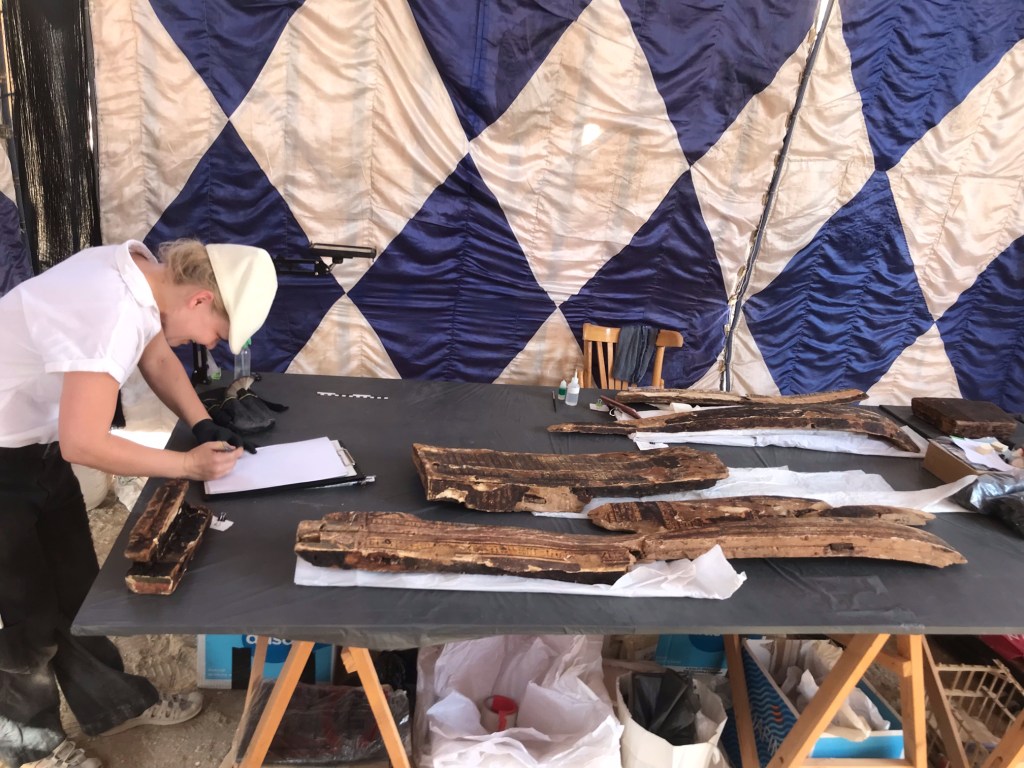It is always a miracle that the time on an excavation goes by even faster than at home. Week 2 of our field season 2022 just ended and was very successful in many respects.
Most importantly, the new conservator of the project has arrived and joined the team this week. Antje Zygalski is a researching conservator for archaeological wooden objects (furniture, sculptures, panel paintings etc.) and a preventive conservator for archaeological and historical objects. She has started her work and is now very productive cleaning and consolidating coffin fragments from TT 414.

We also have an Egyptian conservator, Noura, as a new team member who is helping us with the cleaning of the large number of objects (I need to take a working pic of her next week 😉).
Hassan Ramadan continued the documentation of various small finds by drawing in week 2. He also introduced our inspector Saad Knawy to the archaeological illustration of objects – Saad got an intense training with Late Period clay shabtis and is already making great progress.

From now until the end of the season, Hassan will focus mostly on wooden objects like shrines and pedestals for stelae – he has already much experience with this kind of material from TT 414.

I started the week with finding more fitting pieces of coffins as well as identifying unnumbered ones and photographing these. I then proceeded to study and document fragmented Ptolemaic cartonnages. There are many boxes with small and sometimes larger pieces for which the challenge is to identify related pieces originally belonging to the same cartonnage element. Many of the pieces represent funerary masks of a well-known Theban Ptolemaic type. Larger fragments covering the body of the mummy are often decorated on both sides, with very interesting designs of the sky and deities on the interior.

Infrared photography works perfect for pieces of cartonnage with darkened surfaces and I could identify some names and titles using this method. This allows me to attribute cartonnage elements to persons buried in TT 414 who are already known from their wooden coffins. In the 1970s, the fragmented cartonnage pieces could not be studied because of time restrictions – therefore this new study is of key importance to reconstruct the former burial assemblages. Apart from this great advancement in attributing cartonnage elements to Ptolemaic individuals using the tomb of Ankh-Hor as a burial place, the stylistic assessment, and the comparison of the design of cartonnages with the one of coffins is extremely promising and will take more time and a detailed study.
For now, we are very much looking forward to week 3 of our 2022 season! Conservation, cleaning, photography, study and drawing of the rich material from the tomb of Ankh-Hor will of course continue.
